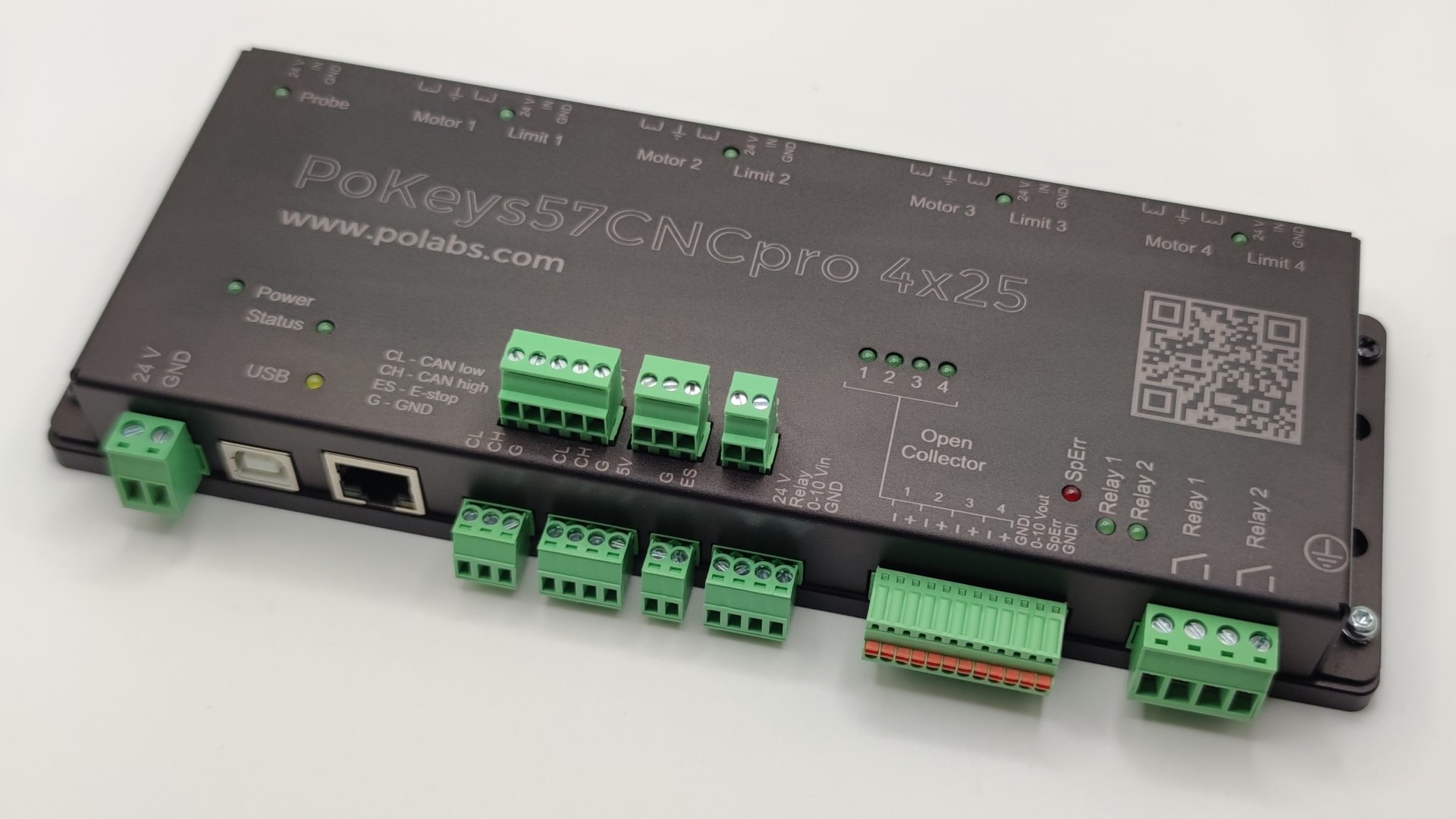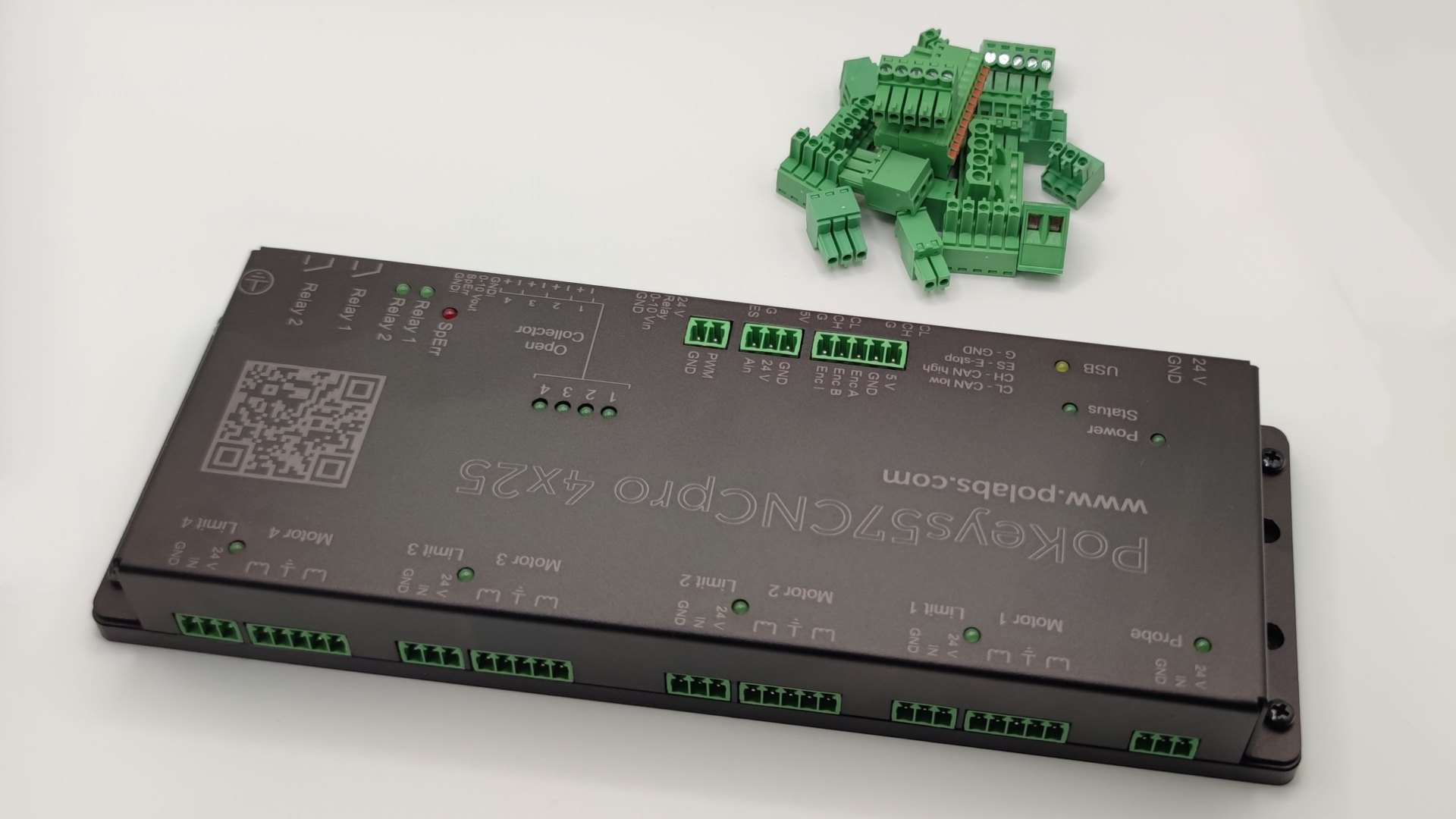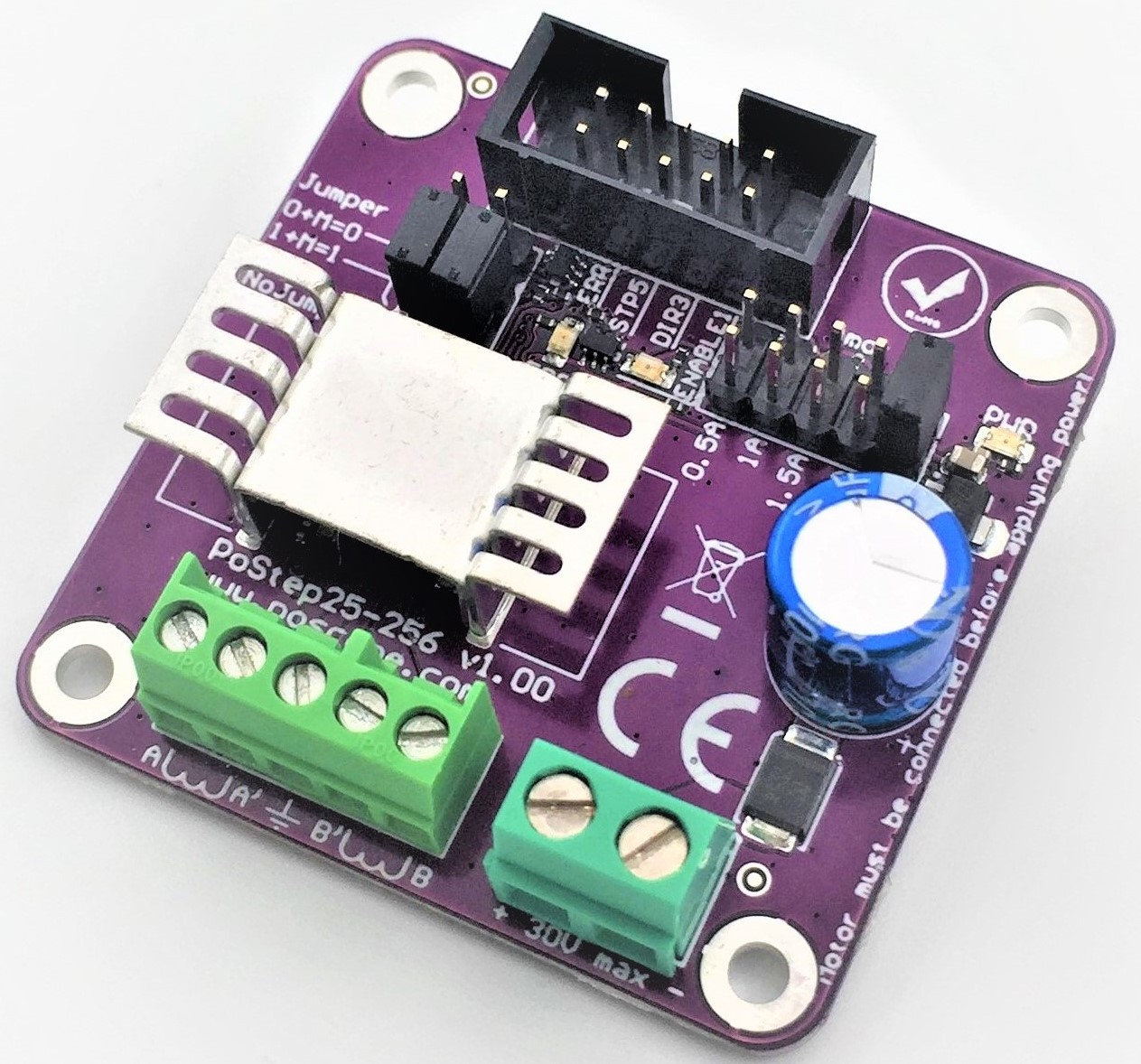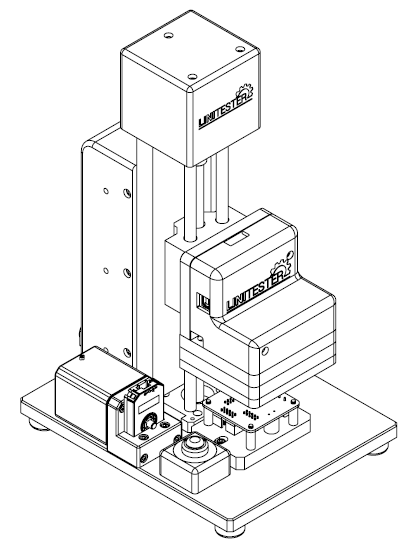In today’s rapidly evolving manufacturing and electronics industries, precision, efficiency, and reliability are paramount. Whether you’re working with CNC machines or testing printed circuit boards (PCBs), having the right tools can make all the difference. This article explores four key components that enhance automation and testing workflows: the PoKeys57CNCpro4x25, a CNC controller with drivers, the PoStep25-256, and a PCB tester.
Each of these devices plays a critical role in modern engineering and fabrication. The PoKeys57CNCpro4x25 offers advanced motion control, while a CNC controller with drivers ensures seamless machine operation. The PoStep25-256 provides high-precision stepper motor control, and a PCB tester guarantees the integrity of electronic circuits. By understanding their functions and benefits, professionals and hobbyists alike can optimize their projects for better performance and accuracy.
In the following sections, we’ll dive deep into each of these technologies, answering key questions about their features, applications, and advantages. Whether you’re upgrading your CNC setup or ensuring flawless PCB production, this guide will help you make informed decisions. Let’s explore how these tools can elevate your work to the next level.
Understanding the PoKeys57CNCpro4x25: A Powerful CNC Motion Controller
The PoKeys57CNCpro4x25 represents a significant leap forward in motion control technology for CNC systems, robotics, and industrial automation. This advanced device combines multiple critical functions—including programmable logic control, human-machine interfacing, and precision motion coordination—into a single compact unit. By integrating these capabilities, the PoKeys57CNCpro4x25 streamlines complex machining operations while delivering exceptional accuracy and reliability.
Core Capabilities and Advantages
One of the most impressive aspects of the PoKeys57CNCpro4x25 is its ability to manage up to six independent axes of motion simultaneously. This multi-axis control is essential for applications requiring intricate movement patterns, such as CNC milling, laser engraving, or 3D printing. The controller generates high-frequency step pulses with exceptional timing precision, ensuring smooth motor operation and minimizing mechanical vibrations that could affect finish quality.

Beyond motion control, the PoKeys57CNCpro4x25 offers extensive connectivity with its 57 configurable digital input/output pins. These allow seamless integration with a wide array of sensors, limit switches, and peripheral devices, eliminating the need for additional interface modules.
The built-in real-time processing capabilities guarantee instantaneous response to commands, a critical feature for high-speed machining operations where even microsecond delays can impact performance.
The accompanying software suite further enhances the PoKeys57CNCpro4x25‘s appeal by providing an intuitive platform for system configuration and customization. Users can easily program macros, adjust motion parameters, and monitor system status without delving into complex coding.
For applications requiring expanded functionality, the modular design supports additional components, making this controller adaptable to both industrial environments and sophisticated DIY projects.
Practical Applications in Modern Manufacturing
In professional CNC machining environments, the PoKeys57CNCpro4x25 significantly improves operational efficiency by ensuring precise tool positioning and movement synchronization.
Its ability to maintain tight tolerances during high-speed operations makes it particularly valuable for producing complex parts with fine details. The controller’s reliability also reduces downtime associated with calibration errors or system faults.
Robotic automation systems benefit equally from the PoKeys57CNCpro4x25‘s capabilities. Whether coordinating the movements of a multi-axis robotic arm or managing an automated production line, the controller’s precise timing and flexible I/O options enable sophisticated motion sequences while maintaining operational safety through real-time monitoring.
For makers and small-scale fabricators, the PoKeys57CNCpro4x25 offers an accessible entry point into advanced motion control. Its combination of professional-grade performance and user-friendly operation makes it ideal for custom CNC routers, automated test rigs, or other innovative projects requiring reliable precision motion.
The Competitive Edge of PoKeys57CNCpro4x25
What truly sets the PoKeys57CNCpro4x25 apart is its ability to deliver industrial-grade performance in a versatile, cost-effective package. Traditional CNC setups often require multiple specialized components to achieve similar functionality, resulting in complex wiring and higher costs. By consolidating these functions into a single intelligent controller, the PoKeys57CNCpro4x25 simplifies system architecture while providing superior control fidelity.
Engineers and machiners choosing the PoKeys57CNCpro4x25 gain not just a motion controller, but a comprehensive solution that enhances productivity, improves machining accuracy, and future-proofs their equipment through expandable design. Its balanced combination of power, precision, and programmability makes it an outstanding choice for anyone seeking to optimize their CNC or automation systems.
What Role Does a CNC Controller with Drivers Play in Machine Performance?
A CNC controller with integrated drivers serves as the central nervous system of any computer numerical control system, orchestrating precise movements while powering the motors that bring designs to life. This all-in-one solution combines motion control intelligence with the muscle of motor drivers, creating a streamlined architecture that significantly enhances machine performance. The synergy between control logic and power delivery in these unified systems offers distinct advantages over separate controller-driver configurations.

The integration of drivers within the CNC controller eliminates signal latency that typically occurs when these components communicate across separate devices.
This direct coupling ensures instantaneous response to motion commands, particularly crucial during high-speed machining operations where even microsecond delays can affect surface finish and dimensional accuracy.
The unified design also simplifies wiring complexity, reducing potential points of failure while making system troubleshooting more straightforward.
Modern CNC controllers with drivers typically support multiple motor types, including stepper and servo configurations, with advanced features like microstepping and closed-loop feedback. This versatility allows machine builders to select optimal drive technologies for their specific application needs without being constrained by controller limitations.
The integrated approach also enables sophisticated features like automatic motor tuning, dynamic current adjustment, and advanced anti-resonance algorithms that would be challenging to implement across separate components.
Thermal management represents another critical advantage of integrated controller-driver systems. By housing both control electronics and power stages in a single optimized enclosure, manufacturers can implement comprehensive cooling solutions that maintain optimal operating temperatures across all components. This coordinated thermal strategy enhances reliability during extended production runs and prevents performance throttling that might occur with discrete components operating at different temperature thresholds.
From a user perspective, CNC controllers with integrated drivers offer simplified setup and operation. Unified firmware ensures seamless compatibility between control algorithms and drive parameters, eliminating the need for complex cross-component configuration. Many systems feature intuitive touchscreen interfaces that provide both machine control and driver status monitoring through a single pane of glass, giving operators complete visibility into system performance.
The compact footprint of these integrated solutions makes them particularly valuable in space-constrained applications. By combining functions that would normally require multiple enclosures into a single unit, machine builders can create more streamlined equipment designs. This consolidation also reduces overall system cost by eliminating redundant power supplies, enclosures, and interconnecting cables required for separate controller-driver implementations.
In industrial environments, the reliability of integrated CNC controller-driver systems proves invaluable. The reduced component count directly translates to higher mean time between failures, while unified diagnostics make maintenance more efficient. Many modern systems incorporate predictive maintenance capabilities that monitor both control functions and driver health, alerting operators to potential issues before they cause unplanned downtime.
For machine shops looking to upgrade their capabilities, controllers with integrated drivers offer a future-proof solution. Their modular designs often allow for driver capacity expansion as needs grow, while firmware updates can deliver ongoing performance enhancements. This scalability ensures that today’s investment continues to deliver value as production requirements evolve.
PoStep25-256: Precision Stepper Motor Control for Demanding Applications
The PoStep25-256 represents a breakthrough in stepper motor control technology, delivering unparalleled precision and smoothness for CNC machines, 3D printers, and automated industrial systems. This advanced microstepping driver combines sophisticated control algorithms with robust power delivery to eliminate vibration, reduce noise, and maximize positional accuracy – critical factors in high-performance motion applications.
Engineering Excellence in Motion Control
At the heart of the PoStep25-256 lies its exceptional 256x microstepping capability, which divides each full step into 256 microsteps for buttery-smooth motor operation. Unlike conventional drivers that produce noticeable vibration at low speeds, this advanced resolution virtually eliminates mid-band resonance, allowing for whisper-quiet performance even during delicate engraving or precise positioning tasks. The driver’s adaptive current control dynamically adjusts power delivery based on real-time load conditions, preventing overheating while maintaining optimal torque output.

The PoStep25-256 implements sophisticated anti-resonance technology that automatically compensates for mechanical vibrations in the motor and drive system. This intelligent damping system analyzes load characteristics in real time and adjusts phase currents to suppress oscillation, resulting in noticeably smoother motion profiles. For CNC applications, this translates to superior surface finishes on machined parts and extended bearing life due to reduced mechanical stress.
Smart Features for Professional Applications
Engineers will appreciate the PoStep25-256‘s comprehensive diagnostic capabilities, including real-time current monitoring, temperature sensing, and fault detection. The driver’s advanced protection circuitry safeguards against overvoltage, undervoltage, overcurrent, and short-circuit conditions, making it exceptionally reliable in continuous industrial operation. An innovative idle current reduction feature automatically lowers power consumption when the motor is stationary, significantly reducing energy costs in production environments.
The driver’s compact form factor belies its impressive power handling, capable of driving stepper motors up to 4A RMS per phase with 24-48V DC input. This makes the PoStep25-256 equally suitable for benchtop prototyping machines and heavy-duty industrial equipment. The inclusion of opto-isolated inputs ensures noise immunity in electrically noisy environments, while the modular design allows for easy replacement or upgrades without system reconfiguration.
Transforming Motion System Performance
In practical applications, the PoStep25-256 demonstrates its superiority across multiple domains. For CNC routers, the driver’s precision microstepping enables finer detail work and smoother curved toolpaths. 3D printer manufacturers benefit from reduced vibration artifacts that typically appear as surface imperfections on printed objects. Automated manufacturing cells achieve higher throughput thanks to the driver’s ability to maintain positioning accuracy at increased speeds.
The PoStep25-256 particularly shines in applications requiring slow, precise movements such as microscope stages or optical positioning systems. Here, its combination of ultra-fine microstepping and anti-resonance control eliminates the “cogging” effect common with lower-resolution drivers. Conversely, in high-speed pick-and-place machines, the driver maintains remarkable positional integrity even during rapid acceleration and deceleration cycles.
For system integrators, the PoStep25-256 offers unparalleled flexibility through its configurable operating modes. Users can select from multiple microstepping resolutions, adjust current limits, and fine-tune motor characteristics via DIP switches or software interface. This adaptability makes it compatible with a wide range of stepper motors, from compact NEMA 17 models to powerful NEMA 34 industrial motors.
The Future of Stepper Motor Technology
What sets the PoStep25-256 apart from conventional stepper drivers is its intelligent approach to motion control. Rather than simply delivering power to the motor, it actively manages the electromechanical system to optimize performance. The result is a driver that behaves more like a sophisticated servo system while maintaining the simplicity and cost-effectiveness of stepper motor technology.
As manufacturing demands continue pushing toward higher precision and efficiency, the PoStep25-256 stands ready to meet these challenges. Its combination of cutting-edge microstepping technology, adaptive control algorithms, and robust power delivery represents the new gold standard in stepper motor control – offering machine builders and automation engineers a competitive edge in an increasingly demanding marketplace.
PCB Testers: Ensuring Reliability in Electronics Manufacturing
In today’s electronics-driven world, PCB testers serve as the final gatekeepers of quality before circuit boards enter critical applications. These sophisticated diagnostic systems have evolved far beyond simple continuity checkers, now incorporating advanced technologies that can detect microscopic defects, validate high-speed signal integrity, and predict potential field failures. From consumer electronics to aerospace systems, PCB testers provide the assurance that every manufactured board meets exacting performance standards.
Advanced Testing Methodologies for Different Applications
Modern PCB testers employ a multi-layered approach to quality assurance. Flying probe testers have revolutionized low-volume production with their flexibility, using precisely controlled probes to access test points without requiring custom fixtures. For high-volume manufacturing, in-circuit test (ICT) systems perform comprehensive component-level verification in seconds, checking values, polarities, and basic functionality of every mounted part. The most advanced automated optical inspection (AOI) systems combine high-resolution imaging with machine learning algorithms to identify soldering defects, component misalignment, and even subtle board warping that could affect long-term reliability.

Boundary scan testing (JTAG) has become indispensable for complex digital boards, allowing testers to verify IC functionality and interconnections without physical probe access. For power electronics and high-current applications, PCB testers now incorporate sophisticated thermal imaging to detect hot spots and current leakage that traditional methods might miss. RF boards benefit from specialized vector network analyzers integrated into testing stations, capable of characterizing high-frequency performance up to millimeter-wave frequencies.
Innovations Driving the Future of PCB Testing
The latest generation of PCB testers incorporates several groundbreaking technologies. AI-powered visual inspection systems now achieve defect detection rates surpassing human capabilities, learning from each inspected board to continuously improve accuracy. Cloud-connected test stations enable real-time quality monitoring across global manufacturing networks, allowing immediate process adjustments when trends indicate potential issues. Some advanced systems even employ X-ray tomography to inspect hidden connections in multilayer boards or verify proper filling of via holes.
For flexible and rigid-flex PCBs, new testing platforms with adaptive fixturing can accommodate board bending during tests to simulate real-world conditions. Environmental stress screening (ESS) capabilities allow some PCB testers to subject boards to thermal cycling and vibration while monitoring performance, weeding out marginal components before they reach the field. The integration of augmented reality interfaces helps technicians quickly locate and understand defects, reducing troubleshooting time and training requirements.
Choosing the Right PCB Tester for Your Needs
Selecting an appropriate PCB tester requires careful consideration of several factors. Production volume largely determines whether flying probe or bed-of-nails systems make more economic sense. Board complexity drives the need for advanced capabilities like high-speed digital testing or RF verification. Many manufacturers now opt for modular tester designs that can grow with their needs, starting with basic functionality and adding advanced features as required.
The most capable PCB testers today offer remarkable versatility. A single station might combine in-circuit testing, functional verification, and burn-in testing, significantly reducing floor space requirements and handling time. Software plays an increasingly important role, with modern test executives providing intuitive programming interfaces, comprehensive data logging, and sophisticated analytics to identify production trends and potential quality issues.
The Business Impact of Comprehensive PCB Testing
Investing in advanced PCB testers delivers measurable returns beyond quality assurance. Early defect detection dramatically reduces rework costs, as problems caught before conformal coating or final assembly are orders of magnitude cheaper to fix. The data collected by modern test systems provides invaluable feedback to design teams, helping refine layouts to improve manufacturability. Perhaps most importantly, robust testing protocols build brand reputation by preventing field failures that can damage customer relationships and incur warranty expenses.
As electronic systems continue proliferating in safety-critical applications like medical devices and autonomous vehicles, the role of PCB testers will only grow in importance. The next generation of test systems already on the horizon promises even greater capabilities, with technologies like quantum sensing for ultra-precise measurements and fully autonomous testing cells that require minimal human intervention. In this rapidly evolving landscape, staying current with PCB testing technology isn’t just about quality control—it’s a strategic imperative for any electronics manufacturer.
How to Choose, Wire, and Optimize Stepper Motor Drivers for Flawless Performance
Advancing Precision in Manufacturing and Electronics
The journey through these four essential technologies—the PoKeys57CNCpro4x25, CNC controllers with integrated drivers, PoStep25-256, and PCB testers—reveals a common thread in modern manufacturing: the relentless pursuit of precision, efficiency, and reliability. Each component represents a critical link in the chain that transforms raw materials into finished products, whether through subtractive manufacturing or electronic assembly.
These technologies demonstrate how innovation continues to reshape industrial capabilities. The PoKeys57CNCpro4x25 exemplifies how motion control has evolved from simple directional commands to intelligent, multi-axis coordination. Integrated CNC controller-driver systems show the advantages of combining control intelligence with power delivery in streamlined packages. The PoStep25-256 illustrates how stepper motor technology has achieved servo-like performance through advanced microstepping and resonance control. Modern PCB testers, with their array of diagnostic capabilities, ensure that electronic components meet increasingly stringent reliability requirements.
What makes these developments particularly significant is their accessibility across different scales of operation. While they certainly enhance industrial manufacturing, they also empower small workshops and individual makers with capabilities that were once exclusive to large factories. This democratization of precision technology fosters innovation at all levels, from prototyping to mass production.
Looking ahead, these technologies will continue to converge and evolve. We can anticipate even tighter integration between motion control and testing systems, with real-time quality verification becoming part of the machining process itself. The incorporation of machine learning and predictive analytics will further enhance both manufacturing precision and equipment reliability. As these tools become more sophisticated yet easier to use, they’ll play a pivotal role in the next industrial revolution—one marked by smart factories, adaptive manufacturing, and unprecedented levels of quality control.
For engineers, machinists, and electronics manufacturers, understanding and adopting these technologies isn’t just about keeping pace—it’s about positioning for leadership in an increasingly competitive and quality-driven marketplace. The tools we’ve examined provide not just incremental improvements, but fundamental advantages in precision, efficiency, and reliability that can redefine what’s possible in manufacturing and electronics production.